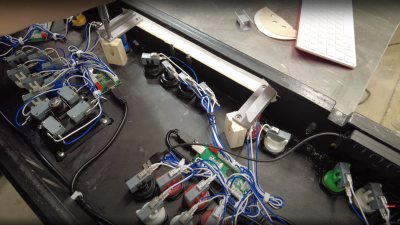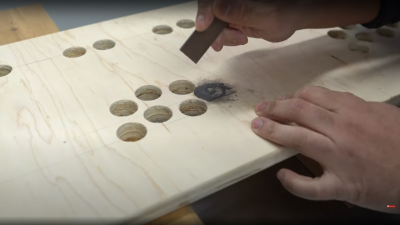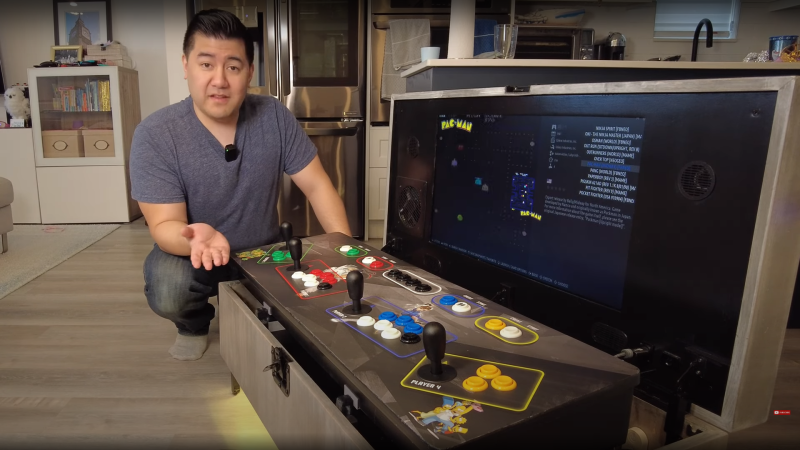[Ed] from 50% Awesome on YouTube wanted to build a retro gaming system with a decent screen size, but doesn’t have a great deal of space to site it in, so a good compromise was to make a piece of useful furniture and hide all the fun parts inside.

This video two-part build log shows a lot of woodwork, with a lot of mistakes (happy accidents, that are totally fine) made along the way, so you do need to repeat them. Essentially it’s a simple maple-veneered plywood box, with a thick lid section hosting the display and some repositioned speakers. This display is taken from a standard LG TV with the control PCB ripped out. The power button/IR PCB was prised out of the bezel, to be relocated, as were the two downwards-facing speakers. The whole collection of parts was attached to a front panel, with copious hot glue, we just hope the heavy TV panel was firmly held in there by other means!

Inside the box’s lower half is a removable section [Ed] calls the game controller. This can reside fully inside the case when not in use and to deploy, is simply sat upon a pair of velcro-mounted rails that are dropped in place. Remember folks, for version one, simplicity is your closest friend. The controller unit houses a Raspberry Pi 400, which is loaded with an image of Batocera.linux to deal with all that emulation stuff. The Pi is slid in from the rear with a couple of 3D-printed brackets to hold it firm. Off-the-shelf Happ-style joysticks and standard-issue microswitch arcade buttons complete the user interface, which [Ed] did admit caused a few fun-and-games to fit. The cabling and joypad interface PCBs (the usual ‘zero delay keyboard encoder’) are common kits available from the usual purveyors of cheap electronics. The surface of the controller was decked out with a slick custom-designed vinyl print, which this scribe can attest to — after a recent arcade machine build — is a good move to help hide all those panel-cutting sins whilst looking totally intentional. On the power supply side of things, the built-in module takes care of supplying the 19V the TV needs, but no mention is made of how the Pi is powered. For wire-free operation, a pair of cordless power tool batteries can be dropped in.
A final twist for this configuration is that the removable controller unit can be easily thrown into the car and taken to other locations to play, and since the lid is basically just a normal TV inside, it can perform other duties such as a streaming media player or just a second monitor for those sofa computing needs. Nice!
Those beyond a certain age may hanker for the arcade halls of old, like in this retrotechtacular we featured last year. If you don’t have the skills or inclination to build a machine, you can buy them, but what do you do if the stock ROMs aren’t to your taste?















Kool
Really cool build, but that doesn’t look very comfortable to play at all.
Ergonomics be darned!
I am jealous, I don’t have the room to build one.
It might be worth buying the controller pre-built, maybe even used. They are available for coffee tables, virtual pinball machines, and “table-top” arcade expansion.